Seed collectors generally aim to sow or dispatch their seed soon after acquiring it. For various reasons, they may need to store the seed for future use. But remember, the longer seed is stored, the greater chance that viability will be reduced or lost.
Seed is collected while embedded in ripe fleshy fruits, dried fruits, in pods, or as single seeds. Depending upon which, proper extraction and cleaning require slightly different treatments. Cleaning seed before storage is easy, but vital to maintaining seed quality.
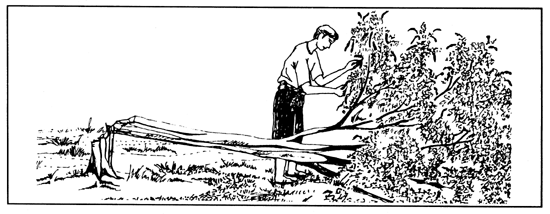
Figure 17 Collecting seeds from a fallen tree.
Most seed extraction requires pre-drying of the fruit. But some may require pre-soaking in order to extract the seed easily.
The following are step-by-step lists of how to extract seed from dry, and fleshy fruits:
For dry fruits (pods or cones)
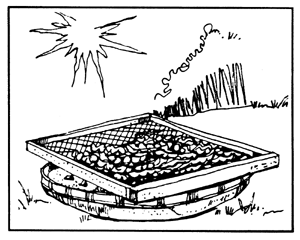
Figure 18 Put pods on a sieve with a container below. After collecting and cleaning, sun-dry seed.
 | 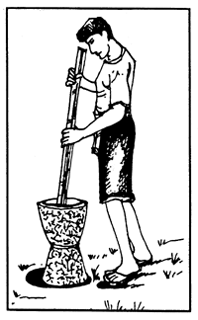 |  |
Figure 19 Beat a sack full of dry pods or fruits with a stick to thresh out the seeds. | Figure 20 Use a mortar and pestle to thresh seeds which are strongly attached to the pods. | Figure 21 Winnowing the seeds. |
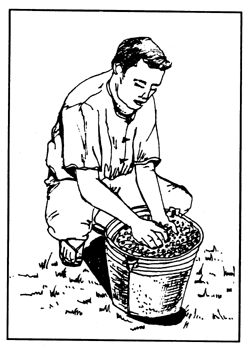 | Fleshy fruits |
| |
| Figure 22 Cleaning the seeds by hand. |
If seeds will be stored for future use, they must be sun dried.
Spread the seeds thinly and evenly on a mat, canvas sheet, light-colored plastic sheet, (a black sheet may cause seed to overheat), winnowing basket, or screen where the sun shines all day (Figures 23 and 24).
Stir and turn the seeds 4–5 times a day for uniform drying. If possible keep seeds (especially moist ones) shaded during intense heat. (noon to 2:00 PM.)
Before it rains or gets dark, take the seeds indoors.
Drying will take 1–3 days, depending on how wet the seeds are.
Protect the seeds from rodents and birds during drying.
The same drying procedure may be used for seeds of most fruit trees. Exceptions are seeds of rambutan, durian, mangosteen, mango, jackfruit, avocado, rubber, cacao and mahogany. These should be air dried only for a day or two before storing, or they must be planted immediately after extraction.
 | 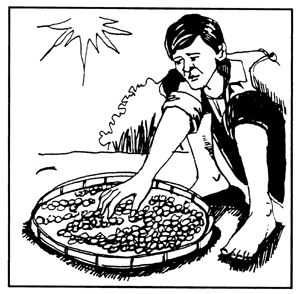 |
| Figure 23 Drying seeds on a plastic sheet. | Figure 24 Drying seeds on a winnowing basket. |